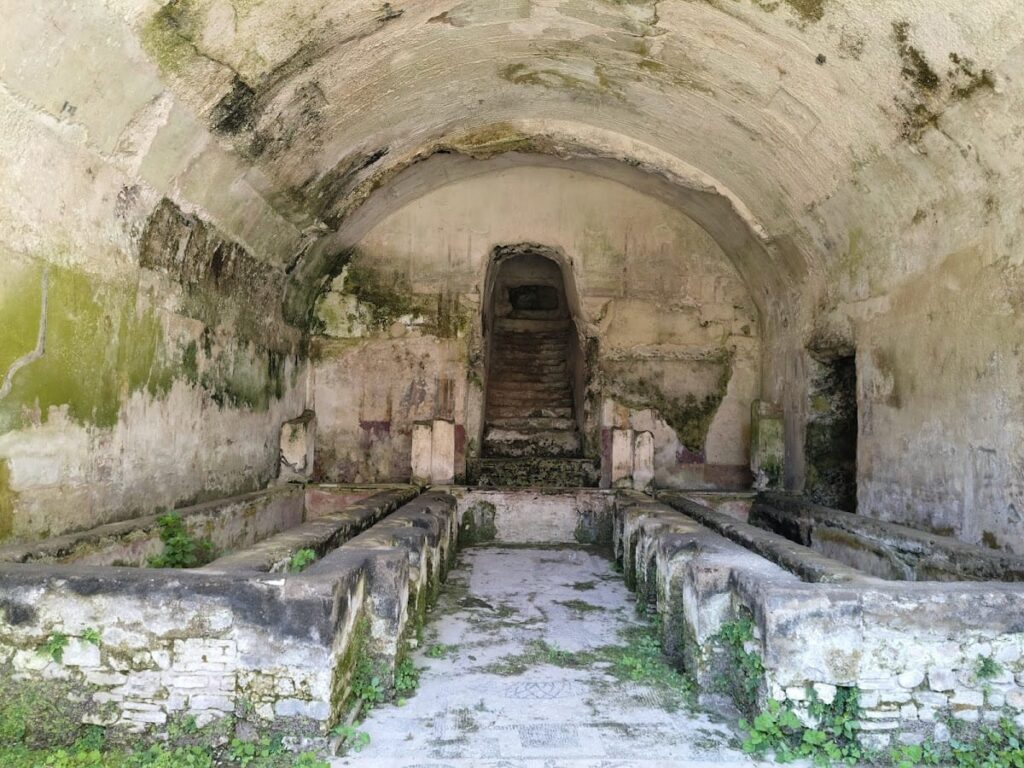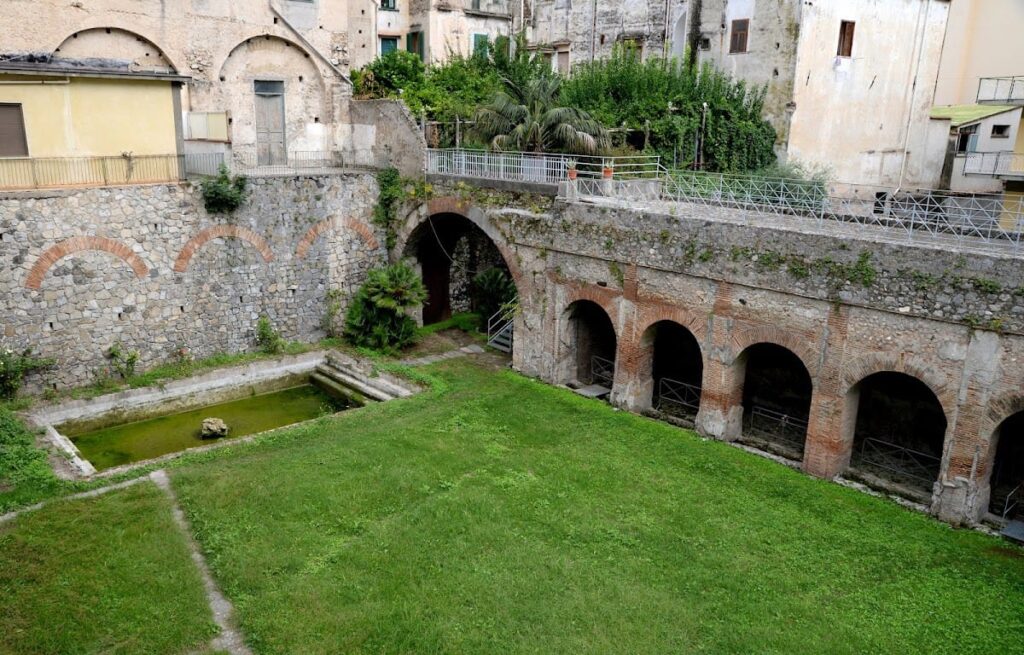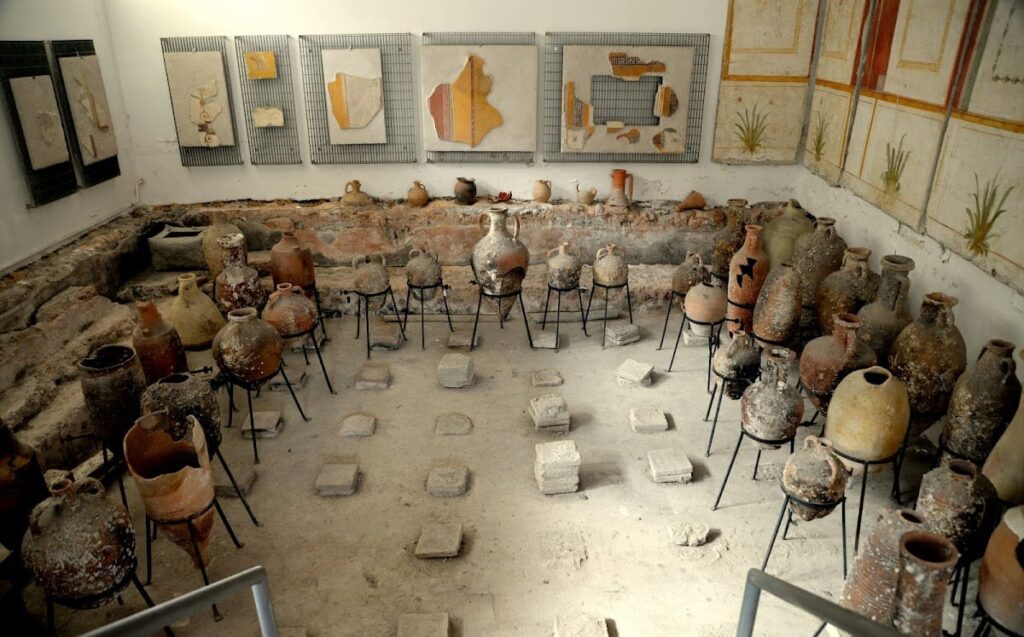Villa Romana e Antiquarium in Minori: A Roman Coastal Residence on the Amalfi Coast
Visitor Information
Google Rating: 4.1
Popularity: Low
Google Maps: View on Google Maps
Official Website: cultura.gov.it
Country: Italy
Civilization: Roman
Remains: Domestic
History
The Villa Romana e Antiquarium is located in Minori, a town on the Amalfi Coast in the province of Salerno, Campania, southern Italy. It was built by the Romans in the 1st century AD, during a time when this coastal area was popular among the Roman imperial aristocracy for their residences.
The villa originally served as a luxurious home for members of the Julio-Claudian dynasty. It remained occupied and in use well beyond the early Roman Empire, with evidence showing continued habitation into the 7th century AD.
Following the decline of Roman authority and the rise of medieval towns along the Amalfi Coast, the villa gradually lost its original function. Over time, it was repurposed and eventually buried under alluvial deposits from the nearby Reginna Minor river. The site’s history reflects the broader transformation of the region from a Roman aristocratic retreat to a medieval settlement area.
Initial awareness of Roman remains at the site dates back to 1874, when reports mentioned Roman baths. A major discovery occurred in 1932 during renovations of a modern house, revealing an underground chamber of the villa. Systematic excavations began in 1934 and continued into the 1950s, with further finds uncovered after a flood in 1954 and during hotel construction in 1956. Restoration efforts, including work on the villa’s mosaics, started in the mid-1990s.
Remains
The villa is arranged symmetrically around a central garden known as a viridarium, which includes a swimming pool. Residential buildings and a covered walkway called a triportico surround this garden. The triportico is divided into two symmetrical sections by a large central hall, creating a balanced architectural layout.
A key feature is the triclinium-nymphaeum, a combined dining room and water sanctuary dating to the 3rd century AD. It contains two masonry-supported dining couches and a marble staircase with a small waterfall. This waterfall feeds hand-washing channels and a pool, all connected through an underground water system.
The villa’s decoration evolved in three phases. The earliest phase, from the 1st century AD, includes hunting scenes and a stucco ceiling. Later, structural reinforcements were added. The final phase, from the Severan period, features mosaics with mythological marine themes such as nereids (sea nymphs) and various sea creatures.
A thermal complex is part of the villa, including an apodyterium (changing room) decorated with mosaics and stucco, a tepidarium (warm bath), and a calidarium (hot bath). The central pool in the garden served as the frigidarium (cold bath). The thermal rooms have double floors supported by terracotta pillars, allowing hot air to circulate beneath for heating. Barrel and semicircular vaults cover these rooms. The tepidarium mosaic shows a large kantharos vase with plant motifs emerging from it.
Near the triclinium-nymphaeum are three vaulted chambers. Two have barrel vaults, while the third features a rare Roman sail vault made of concentric limestone blocks on a rectangular plan. This design likely helped maintain a uniform ceiling height.
The largest room, called the “music hall,” was uncovered in 1932. It contains frescoes with red and black lower walls, upper panels decorated with plant motifs, mythological medallions, and images of musical instruments.
Narrow corridors and steep staircases connect the aristocratic quarters. These passages, which lack decoration, allowed servants to move discreetly and provided access to water supply systems for the baths and water features.
The Antiquarium, built in the 1960s, incorporates remains of a large fishpond associated with the summer triclinium and a room with terracotta pilaster flooring, possibly part of the thermal area. It displays seven wall panels depicting aquatic plants, Roman theater masks, ceramic crafts, the god Mercury, and a damaged Medusa medallion.
The museum also houses ceramic finds including everyday vessels, oil lamps marked with Constantine’s monogram, and two types of amphorae: large dolia used for local food storage and smaller piriform amphorae designed for transport by ship. Additional finds include anchors and commercial amphorae dating from the 6th century BC to the 6th century AD, as well as a lararium niche from Scafati, which was used for family protective deities.










